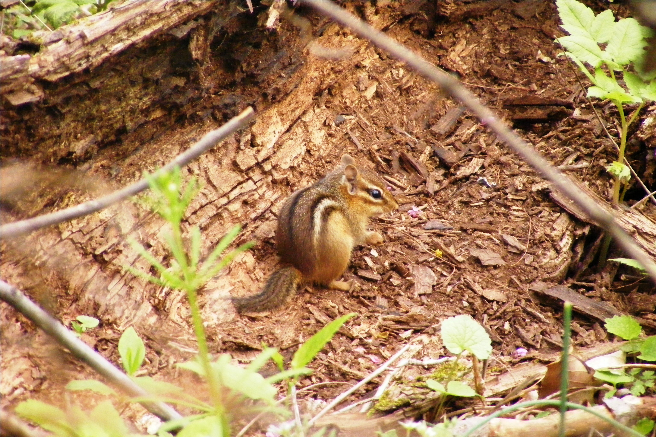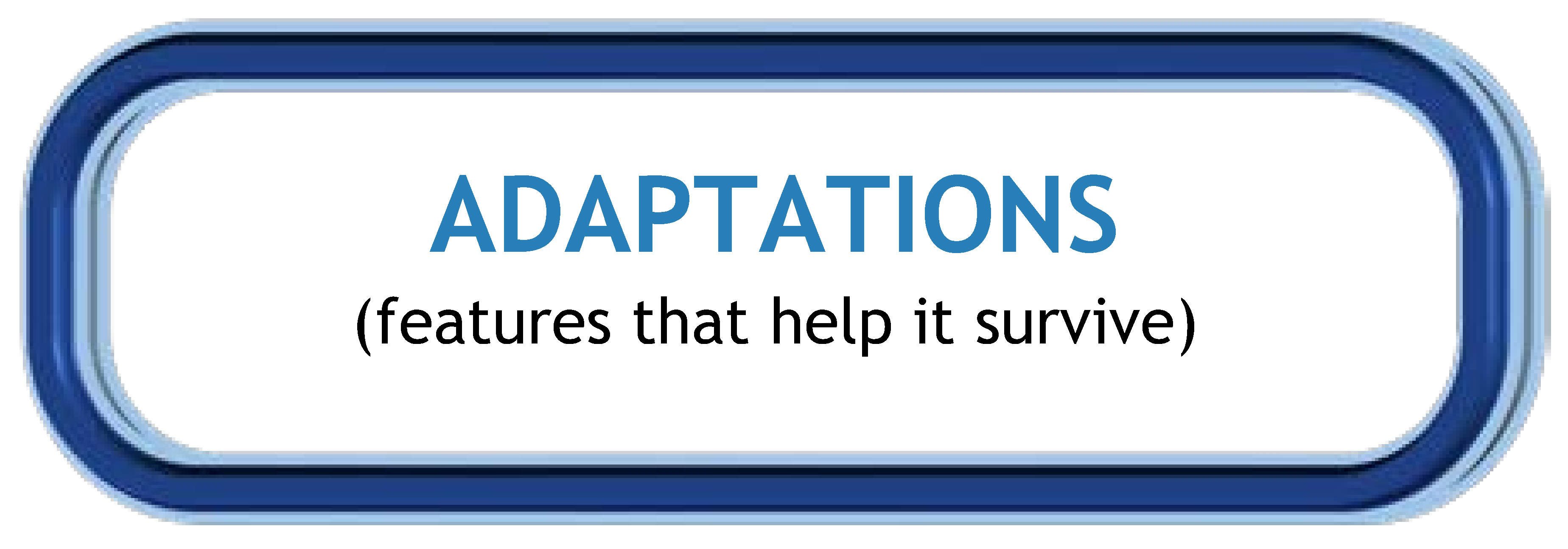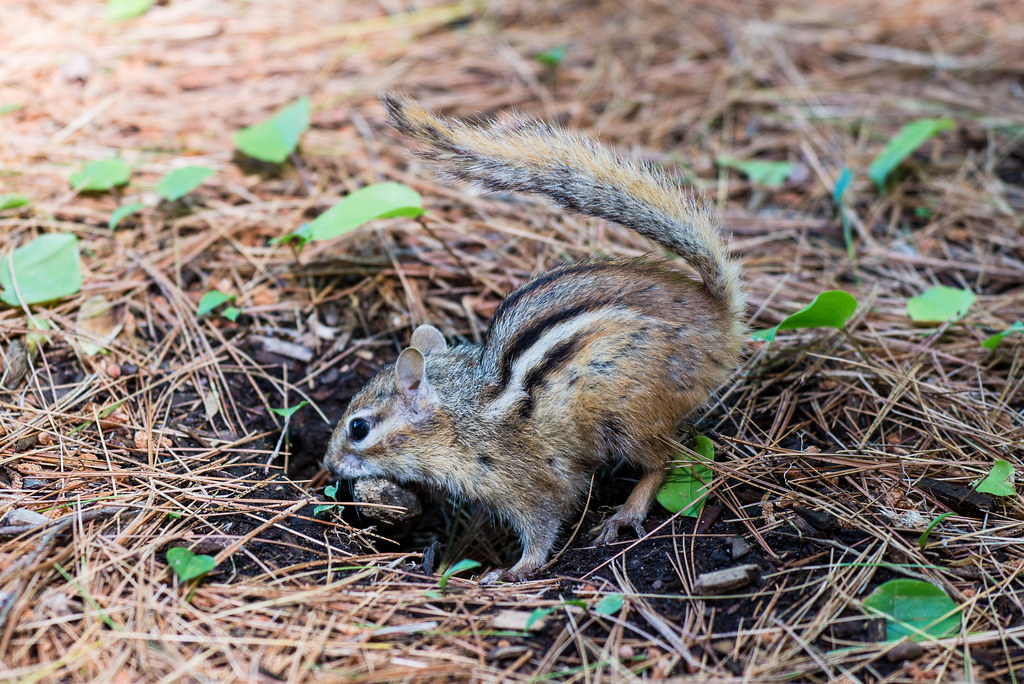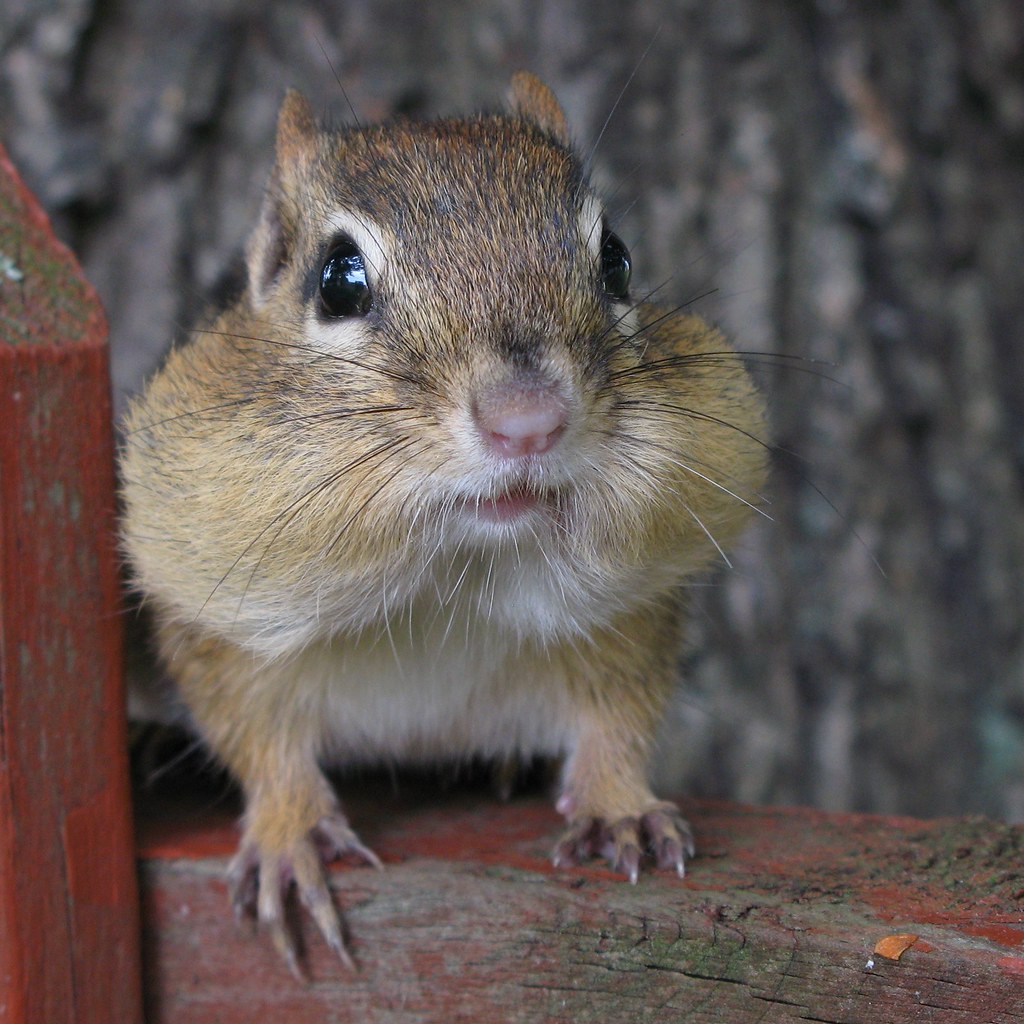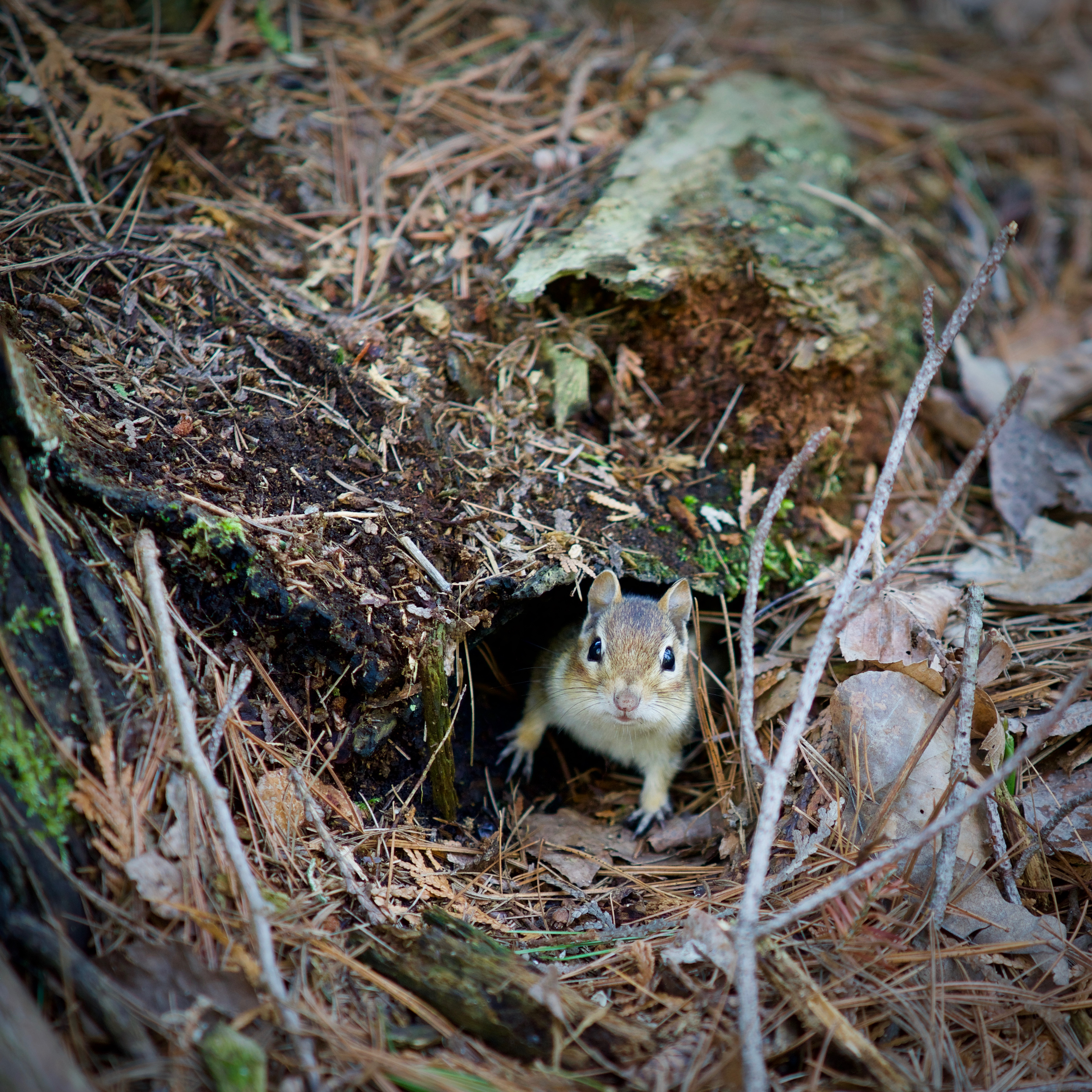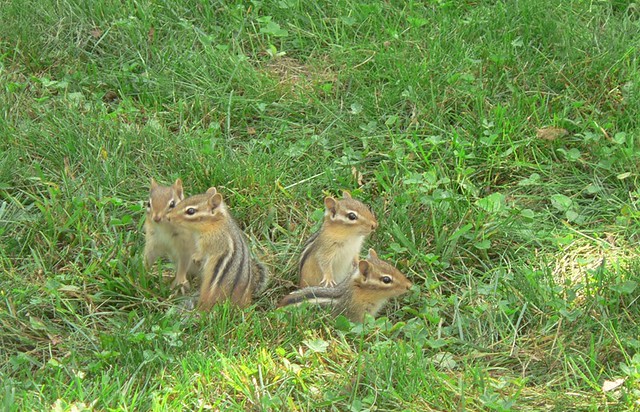Wonders of Wildlife: Eastern Chipmunk
Eastern Chipmunk
Scientific Name: Tamias striatus
Found in Alabama: Common statewide except for extreme southwestern and southeastern regions
Diet: Omnivore (eats plants and animals) |
Eastern Chipmunk in Habitat
NPS
Click on image to enlarge it |
Learn more about...
| CLASSIFICATION |
|
What type of animal am I?
- I am a vertebrate (an animal with a spine or backbone).
- I am warm-blooded, so I can control my body temperature.
- I have fur/hair on the outside of my body that keep me warm.
- I breathe with lungs just like you.
- I have 4 legs.
|
Scientists use basic traits to group animals into different taxonomic classes.
For a taxonomic classification chart comparing key traits of common backyard wildlife,
CLICK HERE! |
|
| The Eastern Chipmunk is a MAMMAL! |
| IDENTIFICATION TIPS |
| |
|
Size: |
- Adults reach an average of 8-10 inches long including the tail.
|
Eastern Chipmunk at Burrow
Flickr - MassMatt
Click on image to enlarge it
|
| Key Characteristics: |
- Reddish brown with five distinct black stripes alternating with white or gray stripes on the back
- Underside is lighter in color
- Light and dark stripes around their eyes
|
Juveniles (young): |
- Young are similar in appearance to adults but are smaller in size.
|
| |
|
|
| ADAPTATIONS |
| |
| PHYSICAL ADAPTATIONS |
| |
| Eastern Chipmunks have special cheek pouches: |
- Eastern chipmunks have special pouches on their cheeks that expand as they grow.
- They use these pouches as temporary storage for food such as seeds and nuts while they are out gathering.
- They cache (store) food in various spots throughout their home range or in a chamber in their burrow underground.
- They increase the amount of food they store in the fall to prepare for the colder winter months.
- They are able to find their stored food using their heightened sense of smell.
|
Eastern Chipmunk with Full Cheek Pouches
Flickr - Gilles Gonthier
Click on image to enlarge it
|
| |
| Eastern Chipmunks use camouflage to hide from predators: |
- An eastern chipmunk's fur coloration allows it to camouflage (easily blend in with its surroundings).
- Its brownish red fur blends in with the coloration of the forests in which it lives.
- The lines along its back further help it blend in with leaves and twigs on the ground, allowing it to be better hidden from predators (animals that eat them) looking at them from above.
|
| |
| |
| BEHAVIORAL ADAPTATIONS |
| |
| Eastern Chipmunks are diurnal: |
- They are active during the day (diurnal).
|
| |
| Eastern Chipmunks use burrows: |
- Eastern chipmunks are solitary (live alone) and construct burrows underground consisting of a series of tunnels.
- These burrows contain one main chamber but may have several entrances.
- The main chamber is generally lined with crushed or chewed leaves and used as a place to raise the young.
- Other chambers serve different functions such as food storage and places to escape from predators (animals that eat them).
|
Eastern Chipmunk Coming Out of Burrow
Dreamstime
Click on image to enlarge it |
| |
| Eastern Chipmunks communicate with one another: |
- Eastern chipmunks are known to make a variety of sounds in order to communicate with one another.
- Males produce a special call if they face competition from another male. They do this to defend their territories (area where they live).
- Males and females make a chipping sound to alert other individuals of a threat. If this sound is heard, other Eastern chipmunks will change their foraging behavior to be more watchful.
|
| |
|
|
| |
|
|
| Life Cycle Stages of the Eastern Chipmunk |
| |
|
|
Nest: |
- A special chamber within the burrow is lined with crushed leaves where the females give birth to the young.
|
| |
|
|
Young: |
- Females give birth to an average of 4-5 young per litter, but can range from 2-7 young per litter.
- Eastern chipmunks can breed twice per year.
- Young resemble the parents but are smaller in size.
|
Baby Eastern Chipmunks
Flickr - Patty O'Hearn Kickham
Click on image to enlarge it |
| |
|
Life Span: |
- Average life span is less than two years, but they can potentially live up to 8 years.
|
| |
|
|
| NATURAL Habitat Needs |
ADULTS |
YOUNG |
| Food |
- Omnivores (eat plants and animals) but feed mostly on plants.
- Feed on fruit, seeds, nuts, and other vegetation. Will also eat insects, earthworms, slugs, bird eggs, mushrooms, and animal bone.
|
- Feed on milk from the mother for the first 6-8 weeks after birth.
|
| Water |
- Majority of water is obtained through the diet.
- They will drink from streams, ponds, puddles, and pools of standing water.
|
- Obtain hydration from mother until independent.
|
| Shelter |
- They create underground burrows in habitats such as hardwood forests, mixed forests, and ravines.
- They will also take cover under stumps, logs, and rocky outcrops.
|
- Young remain in the burrow until they are no longer dependent on their mother for nutrition.
- They then disperse (move to a new location) to new burrows.
|
| Places to Raise Young |
- Young stay in the leaf lined chamber of the burrow until they are no longer dependent on the mother (around 2 months).
|
|
BACKYARD
Habitat Needs |
ADULTS |
YOUNG |
| Food |
- Provide seed or nut-producing trees, fruit-producing plants, and plants to support insect populations.
|
- Providing resources to support the parents will indirectly support the young because the young rely on the mother for milk.
|
| Water |
- If natural source of water is not located nearby, provide a standing source of water such as a birdbath.
|
| Shelter |
- Provide bushes, shrubs, and trees for refuge.
- Do not disturb burrows if discovered.
|
- Young remain in the burrow until they are no longer dependent on their mother for nutrition.
- Providing resources for the adults will also provide support for the young.
|
| Places to Raise Young |
- Do not remove all leaf litter, as females will use some to line nest.
|
|
| ECOLOGICAL ROLE |
| |
|
| Animals play an important ecological role in the health of habitats and ecosystems. |
| |
|
|
Food Source:
|
- Eastern chipmunks are eaten by a number of animals including foxes, snakes, hawks, and other birds of prey.
|
| |
|
| Seed Dispersal: |
- Eastern chipmunks play an important role in seed dispersal (moving seeds to new locations) due to their behavior of hoarding seeds and nuts.
- They also serve a role in scattering spores of fungi located in their surrounding habitat by brushing past mushrooms and picking up and depositing the small spores with their fur.
|
INFORMATION SOURCES FOR THIS SPECIES
.



 Wildlife Tag
Wildlife Tag
